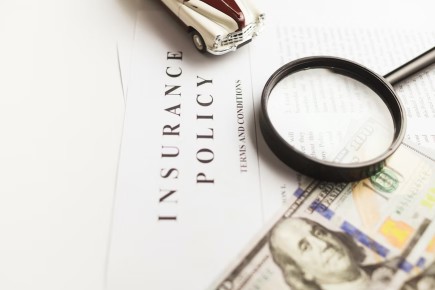NEWS
What Are The Different Types Of Car Insurance Available In the Market?

Insuring your car comes with a lot to consider. Many types of car insurance are available, so it’s essential to understand them to choose the right one. Choosing the cheapest policy can be appealing. But with the projected increase in global accidents, there’s no better time to know and understand them.
Therefore, it would help to think about whether you may benefit from adding extra coverage and how to choose the right type of car insurance. For people living in the
Why Do You Need Car Insurance?

A car insurance policy protects you financially in case of an accident — different types of car insurance cover claims resulting from injuries to others. Even if you don’t drive your car, you must have third-party insurance if you own a roadworthy vehicle.
Only a Statutory Off-road Notification (SORN) will inform the authorities that your car is officially off-road. A fine and a minimum of six points on your license can result in disqualification for driving without insurance. You may also lose your car. As a citizen of South Carolina and given the importance of insurance in the automobile sector, you can search for South Carolina auto insurance providers to make yourself entirely secure.
What are the Types Of Car Insurance?
The following are the major types of car insurance:
Comprehensive

Did you know that 59% of drivers don’t know that comprehensive car insurance would pay for a tree branch falling on their car? This policy protects your vehicle against damage resulting from natural disasters like hail and wind, fire, theft, vandalism, falling objects, and animal attacks. Besides, it also covers your windshield.
There is also a deductible on comprehensive insurance, just like collision insurance. For example, a buck darts into your path, and you hit it head-on. The accident causes significant front-end damage to your car, resulting in a $7,000 repair bill. So, the insurance company would pay $6,500 toward the repairs, and you would be responsible for the rest.
Third-Party
Drivers are legally required to have third-party coverage as the minimum level of car insurance. It only covers third-party injuries or damage. It may include:
- Animals, passengers, or other people getting injured
- Property damage caused to others
- Accidents caused by passengers or named drivers
- If any of your passengers get injured in a collision caused by your negligence
Therefore, third-party car insurance does not cover theft or fire damage to your car. You cater to your repairs or replacement costs if you get injured.
Third-Party, Fire, and Theft (TPFT)
Third-party, fire, and theft insurance — also known as TPFT — offer the following additional coverage:
- Fire, theft, or damage to your car will cause a write-off
- Theft-related impairment, as long as you weren’t at fault
You cannot get third-party insurance if you cause any damage to your car or suffer injuries.
Some inexperienced drivers with older, low-value cars choose third-party insurance, which is often the cheapest option. Since insurers perceive them as high-risk, third-party coverage can be more expensive than comprehensive coverage. Additionally, not all insurers offer it.
Uninsured and Underinsured Motorist Protection
Although nearly every state requires drivers to carry liability coverage, many people drive without it. According to the Bankrate, an estimated 32 million drivers will be uninsured in 2022. Uninsured and underinsured motorist (UM/UIM) coverage helps pay for accident-related expenses.
This coverage kicks in if you get hit by an uninsured driver or a driver whose policy limits are too low to cover your bills. Some states may require drivers to carry UM/UIM coverage, while others don’t.
How to Shop For a Car Insurance Plan?
Knowing your vehicle insurance needs is the first step in shopping for a car insurance plan. Buying a used car involves weighing three essential factors. The coverage type depends on the car’s value, the insurance premium, and the extent of the coverage.
You can choose third-party or liability coverage if your vehicle is not in good shape. Besides covering the driver of your car and the passengers, you can also purchase personal injury coverage. You can repair an old car at a lower price instead of paying a higher premium.
Knowing the difference between third-party and comprehensive insurance is essential to choose the most appropriate policy for your needs. You can add additional insurance riders to the third-party coverage, such as zero depreciation, engine replacement, and other factors relevant to your condition.
Cost of Repair or Replacement
It is costly to repair or replace the vehicle. Therefore, getting an expert’s help is essential when assessing potential risks. You should purchase an insurance policy from a reputed insurance company to meet your needs. Here’s what you should know:
- You should receive the best support from your insurance company
- If you need vehicle repairs or restoration, a cashless garage — those that collaborate with the insurance company can make your life much easier.
- You should be familiar with the insurance policy terms and conditions to avoid any issues.
Conclusion
Choosing the best types of insurance for car owners is essential to minimizing risk and maximizing benefits. A third-party policy may be the cheapest option, but it won’t cover the policyholder’s interests. It is, therefore, essential to choose an insurance policy based on the make and model of the vehicle, the frequency of usage, and the location, among other factors. Comparing and analyzing various kinds of coverage will help you find the best car insurance policy.
Umar Nisar was born and raised in the busy city of Abbottabad. As a journalist, Umar Nisar has contributed to many online publications including PAK Today and the Huffing Post. In regards to academics, Umar Nisar earned a degree in business from the Abbottabad UST, Havelian. Umar Nisar follows the money and covers all aspects of emerging tech here at The Hear Up.
Thanks










